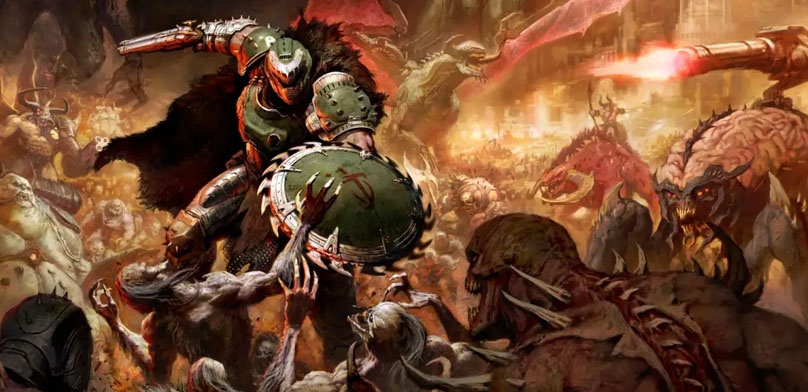The Evolution of Gaming: From Pixels to Realism
The journey of video game graphics is a remarkable reflection of technological advancement and cultural shifts within the gaming community. Early video games, primarily in the 1970s and 1980s, were characterized by simple pixelated visuals that, while limited, fostered rich imaginative experiences. Titles like “Pong” and “Space Invaders” showcased the ingenuity of developers who crafted engaging gameplay within stark graphical limitations. These early graphics set the foundation for what would evolve into a multi-faceted medium.
As hardware capabilities expanded, so too did the graphical sophistication of games. The introduction of 16-bit systems in the late 1980s brought forth a new wave of artistry, with games such as “Sonic the Hedgehog” and “Super Mario World” demonstrating vibrant colors and more complex character designs. This period marked a shift in player expectations, as graphics became a crucial element in conveying thematic depth and narrative. As such, players began to associate graphical fidelity with quality and immersion, bringing forth a demand for increasingly detailed visuals.
The true transformation happened with the advent of 3D graphics in the 1990s, propelled by advancements in computer processing power and graphics rendering technologies. Landmark titles like “Doom” and “Final Fantasy VII” redefined player experiences, immersing users in rich, expansive worlds that were previously unimaginable. These developments not only improved visual realism but also enhanced gameplay, enabling more complex mechanics that resonated with audience expectations.
In the current landscape, photorealistic graphics dominate, courtesy of powerful GPUs and game engines capable of creating lifelike environments and characters. However, today’s gamers increasingly recognize that while stunning visuals heighten immersion, gameplay remains a crucial element that determines a game’s overall quality. Consequently, as the industry continues to evolve, the balance between gameplay and graphics becomes ever more significant in shaping future gaming experiences.
The Importance of Gameplay: Why Mechanics Matter
In the realm of video games, the aspect of gameplay holds paramount importance, often outweighing the glamorous sheen of high-end graphics. Gameplay encompasses a myriad of elements including mechanics, controls, storylines, and player interactions, all of which contribute to engagement and enjoyment. The mechanics of a game—how players interact with the game world and how those interactions trigger responses—form the backbone of the overall experience. Intuitive controls not only facilitate smoother gameplay but also enhance the feeling of immersion, allowing players to connect with the game on a deeper level.
Consider successful titles such as “Minecraft” and “Celeste”; both games showcase simple graphics that may not dazzle the eye, yet they excel in gameplay mechanics. “Minecraft”, with its blocky aesthetics, offers players an open-world sandbox where creativity and exploration reign supreme. The mechanics of crafting, building, and survival create a captivating environment that keeps players invested long after they first pick up the controller. Similarly, “Celeste” captivates audiences not through graphical fidelity, but through refined mechanics that challenge skill and determination, paired with a compelling story that resonates emotionally.
These examples illustrate that a game’s mechanics can drive the emotional and cognitive engagement of players. When a game successfully combines rich storytelling with effective controls and rewarding interactions, it creates a gaming experience that is difficult to forget. Games built primarily on their gameplay mechanics often cultivate loyal fan bases and maintain longevity in the gaming community. Ultimately, while modern technology and high-resolution graphics play an essential role in game development, the core mechanics of gameplay remain fundamental to crafting a truly engaging and memorable experience.
Striking a Balance: How Graphics Enhance Gameplay
In the realm of video gaming, the interplay between graphics and gameplay is a cornerstone of player experience. Effective graphics serve not only as eye candy but also significantly enhance gameplay by immersing players into vividly crafted worlds. When executed well, striking a balance between these two elements can lead to richly engaging experiences that resonate with users on multiple levels. Games like “The Last of Us” demonstrate this concept beautifully; its stunning visuals complement the emotional storyline, strengthening player connection through carefully designed environments and lifelike character animations.
Moreover, high-quality graphics can elevate player immersion by establishing a believable atmosphere that draws players deeper into the narrative. For instance, “Red Dead Redemption 2” combines breathtaking visuals with intricate gameplay mechanics, transporting players to an expansive and dynamic open world. The attention to detail in graphics—from the realistic depiction of natural landscapes to subtle environmental interactions—fosters a sense of presence, making players feel as if they are genuinely part of the game’s universe. This emotional engagement often leads to a more enjoyable gaming experience.
However, developers face significant challenges in achieving this perfect harmony. Hardware limitations often dictate the extent to which graphics can be advanced, requiring developers to make tough decisions regarding visual fidelity versus gameplay performance. Additionally, budget constraints may hinder the ability to incorporate high-quality graphics alongside complex gameplay mechanics. Striking a balance necessitates a thorough understanding of both aesthetics and functionality, as well as a willingness to innovate within the limitations present. As the gaming industry evolves, the quest for a seamless integration of stunning graphics with captivating gameplay remains a significant focus for developers and gamers alike.
The Future of Gaming: What Lies Ahead?
The gaming industry is on the precipice of unprecedented innovation, driven by technological advancements that promise to redefine the interplay between gameplay and graphics. As developers strive to enhance user experience, emerging technologies such as virtual reality (VR), augmented reality (AR), and artificial intelligence (AI) are poised to play a pivotal role in shaping the future of gaming.
Virtual reality and augmented reality have the potential to create immersive environments that significantly heighten the visual experience. With VR headsets becoming increasingly sophisticated, gamers can expect richer graphical output that closely mimics reality. This integration of high-definition visuals into interactive terrains makes gameplay more engaging by stimulating a more profound emotional connection between players and the virtual world. Moreover, as AR continues to seep into mainstream gaming experiences, the line separating real-world elements and digital graphics blurs, enhancing overall gameplay while keeping visuals stunningly realistic.
Artificial intelligence is another factor set to influence the graphics versus gameplay debate. AI enhances gaming mechanics by providing dynamic responses based on player actions. Games powered by sophisticated algorithms can produce lifelike graphics that adapt to how players interact with the game. This adaptability engenders a unique gameplay experience, where graphics serve as a conduit for an enriched narrative and overall immersion. Industry experts speculate that as AI continues to evolve, its capacity to optimize graphical fidelity without compromising gameplay depth will lead to a new standard in game design.
The gaming community remains divided on the definition of a “perfect” game, where both stunning graphics and compelling gameplay are essential. Future trends suggest a harmonious integration that not only satisfies visual enthusiasts but also deep-seated gameplay aficionados. As we delve into this new era, the balance between gameplay and graphics becomes increasingly nuanced, hinting at exciting possibilities ahead for one of the world’s most dynamic entertainment mediums.


No responses yet